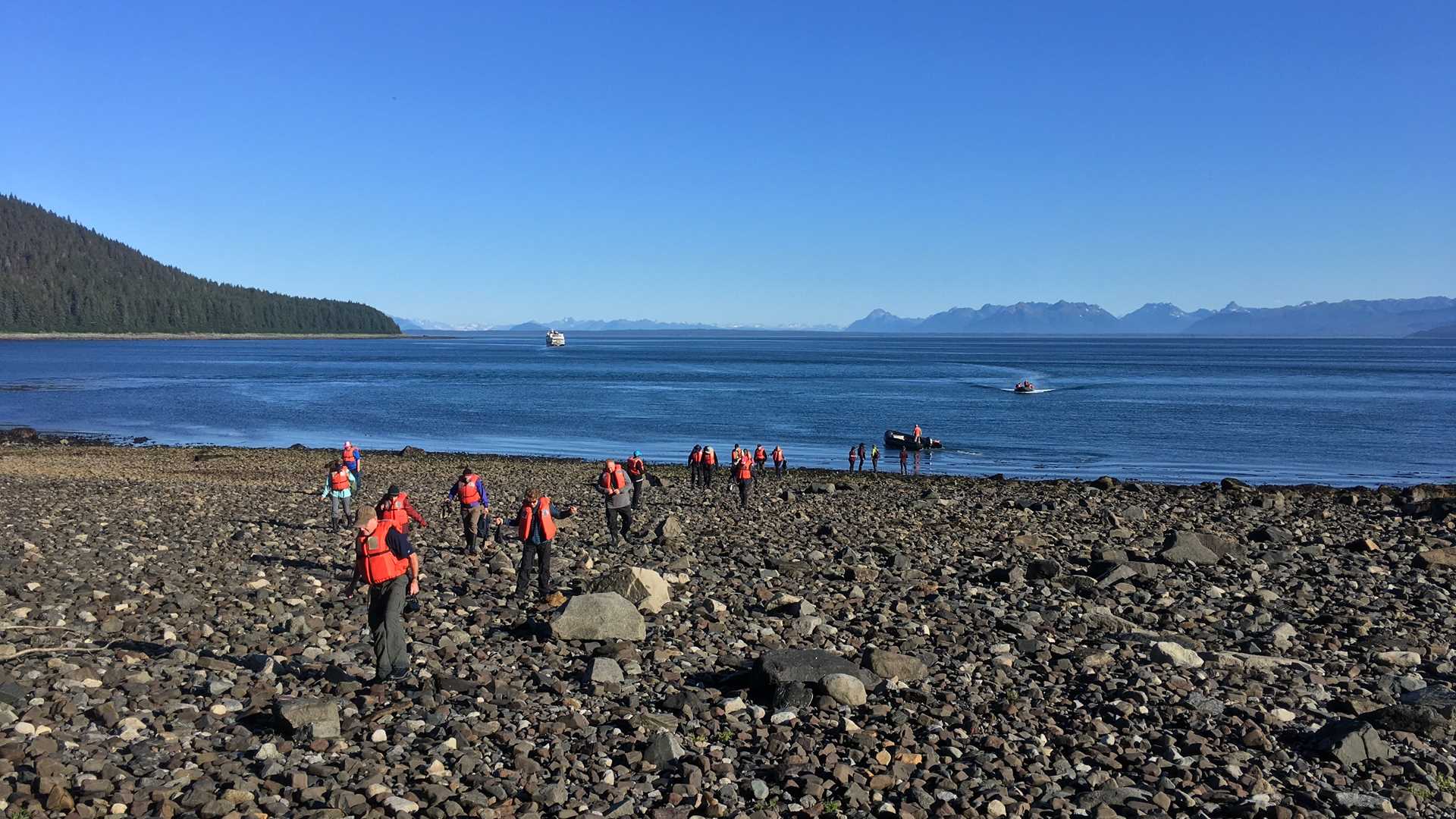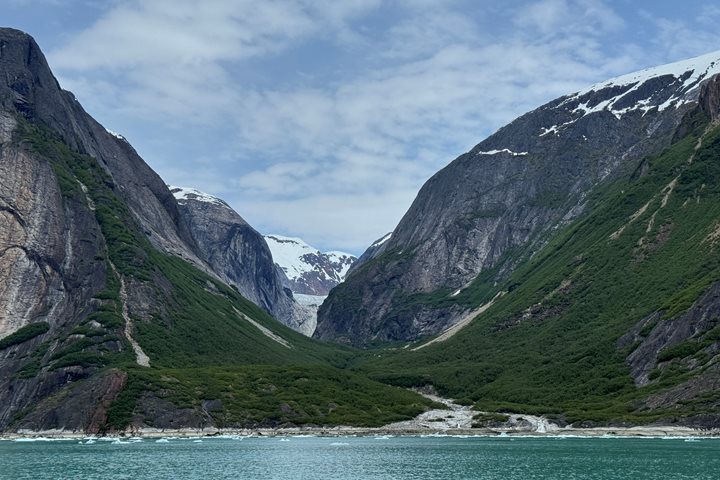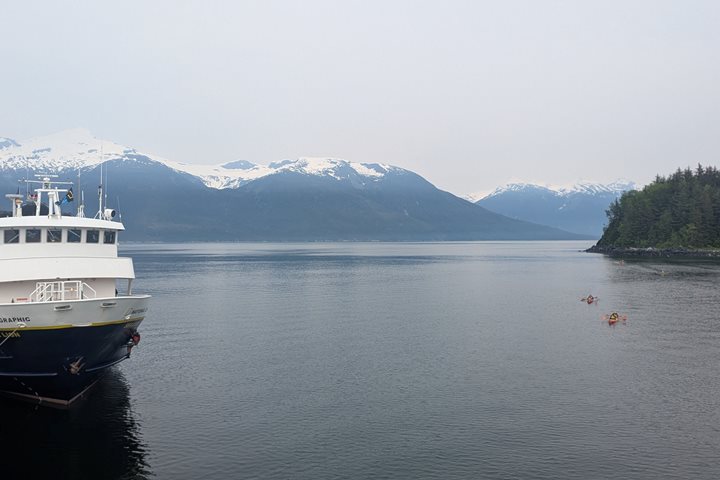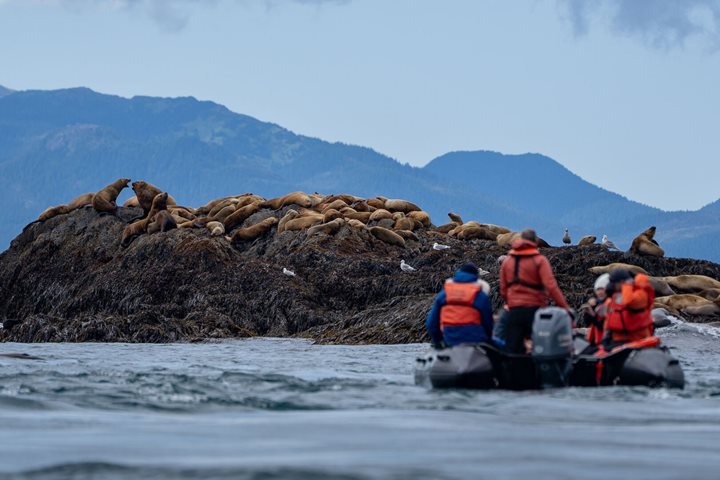This morning we woke up to spectacularly rare weather for Southeast Alaska: sunny, very clear skies, and almost no wind. The bridge officers of National Geographic Sea Bird navigated into Pinta Cove, at the northern end of Chichagof Island, where we set anchor. Before breakfast, the whole expedition staff set off to scout the landing. Around this same time, guests and crew noticed the blows of whales, some rather close to the ship.
There was excitement amongst the expedition staff this morning, as none of us had visited this location before. Shortly after the morning’s successful reconnaissance, guests were shuttled to shore, where we observed humpback whales. We eventually split up into four small groups to match interests. A casual shoreline exploration of the intertidal zone found many urchins and sea stars, as well as small fish, barnacles, and mussels. A group of moderate hikers split time between the fascinating shoreline and the forest. Along the rocky shoreline, some very interesting cracks and joints were observed in the bedrock.
Groups of hardy hikers spent time bushwhacking into the forest and climbing up to the top of a nearby hill. On this hike, many plants of the temperate rainforest were observed firsthand including the Devil’s club, blueberry, Sitka spruce, and western hemlock. A few guests even sampled the wild and somewhat tasty watermelon berry. In addition, we also observed a saprophytic orchid called coral root and many kinds of fungi including one called “chicken of the woods.”
Upon arriving back to the landing area from the various hikes, time was spent sitting on the shoreline near the landing zone observing the whales, which continued to be very close to shore. Some guests needed a bit of convincing to return to the ship, as the whale watching was that good.
After a tasty lunch, we headed out to explore Icy Strait for wildlife under sunny conditions and excellent visibility. There wasn’t a single cloud in the sky. In the early afternoon we saw a few whales and birds, an even a sea otter. As the afternoon progressed, we were graced with a spectacular killer whale sighting. Many individuals were seen, including both males and females, who appeared to be hunting. Also, we observed and photographed multiple breeches. It was a spectacular afternoon on the outer decks of National Geographic Sea Bird.
In the evening, we had the chance to make a landing at Bartlett Cove, part of Glacier Bay National Park. In addition to being a lovely place for a short after-dinner hike, this was the only time we stepped onto the “continent” of North America during the voyage, except for when we disembark in Juneau.







